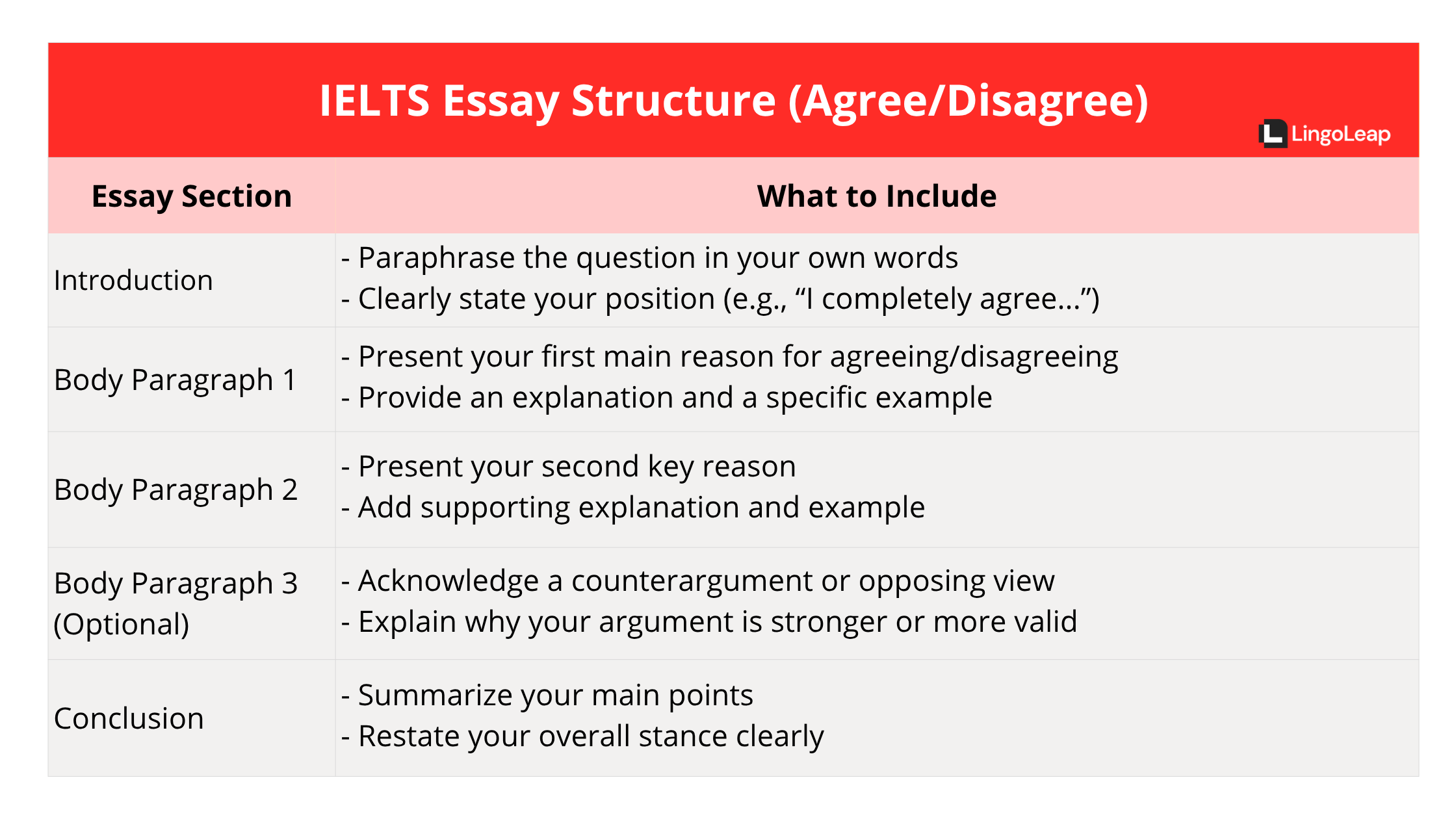How to Write IELTS Writing Task 2 Agree or Disagree Essays: Tips and Practice Questions
What is the Agree/Disagree Essay in the IELTS Exam?
IELTS Writing Task 2 agree or disagree essays are one of the most common question types in the IELTS Writing section. This guide will help you understand what examiners expect and how to structure your response to aim for a Band 7 or higher.
Where This Question Type Appears
The agree or disagree essay is part of the IELTS Writing Task 2, which appears in both the Academic and General Training versions of the IELTS exam. It is the second task in the Writing section and plays a much bigger role in your overall writing band score.
Key details you should know about Task 2:
- Time limit: 40 minutes
- Minimum length: 250 words
- Language style: Formal academic English
Task 2 accounts for two-thirds (66%) of your overall Writing score, while Task 1 makes up the remaining one-third (33%). Because of this weight, Task 2 is your main opportunity to demonstrate your ability to construct a clear, logical argument and use language accurately and effectively. Strong reasoning, relevant examples, and organized ideas are essential.
You’ll typically see this format:
To what extent do you agree or disagree with the following statement...?
This format is asking for your opinion and how strongly you support it — not necessarily to present both sides equally.
What the Examiner Is Looking For
When answering this kind of prompt, the IELTS examiner will score your essay based on four key criteria:
- Task Response (TR): Did you fully address the question and develop your position clearly?
- Coherence and Cohesion: Is your essay logically organized and easy to follow?
- Lexical Resource: Are you using a good range of vocabulary accurately?
- Grammatical Range and Accuracy: Are your sentence structures correct and varied?
Here’s a key misunderstanding: many students think that “agree/disagree” essays require arguing only one side or presenting both sides equally — but that’s not what the rubric demands.
Band 7
You can choose a clear position (agree or disagree) and support it with relevant reasons. A strong opinion alone, with good development, is enough for Band 7.
Band 8 or 9
You’ll need a more nuanced, in-depth argument. This often involves acknowledging a counterargument briefly and explaining why your view still holds stronger — not giving equal weight, but showing awareness.
Practical Tips for IELTS Agree Disagree Essays
1. Understand the Prompt
Focus on “To what extent…” — it’s asking how much you agree or disagree, not whether both sides are valid.
You can choose:
- Strong agreement – explain why you fully agree
- Strong disagreement – argue against the statement
- Balanced view – agree with some parts, disagree with others
But whichever approach you choose, your position must be clear and consistent.
2. Plan Before You Write
Spend 5 minutes planning your ideas:
- Decide your position
- Write 2–3 key reasons
- Add a possible counterpoint if aiming for Band 8+
- Think of specific examples or explanations
3. Use a Clear Essay Structure
Follow this structure to organize your IELTS agree/disagree essay effectively:

4. Use Strong Linking and Academic Tone
Examples of useful phrases:
- I strongly agree that...
- There is clear evidence to support...
- While some may argue that... I believe...
5. Stay Relevant and Focused
Don’t drift off-topic or try to cover both sides equally. You may lose marks in Task Response if your position is unclear or parts of the prompt are not fully addressed.
Final Tip: Practice with Feedback
Writing one or two essays isn’t enough. Practice regularly and get feedback based on IELTS scoring criteria so you know what to improve.
If you want structured help, try LingoLeap’s AI IELTS Writing Checker to get instant band scores, detailed feedback, and writing tips tailored to your answers.